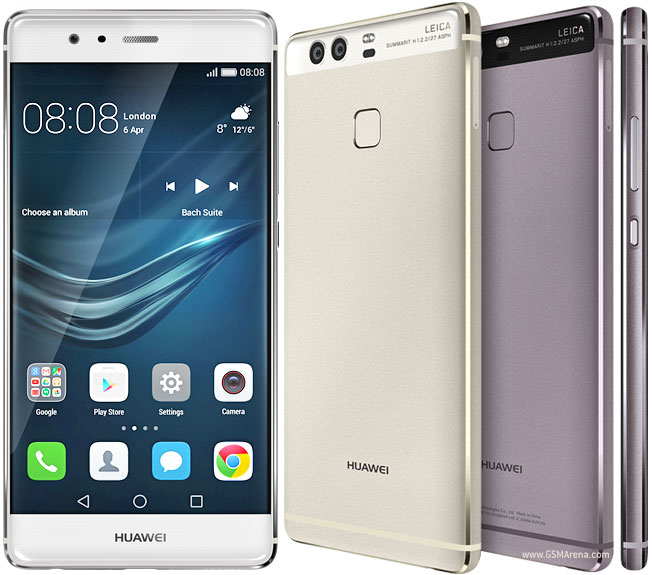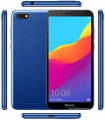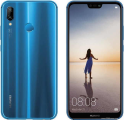Huawei P9 Prices
Important Note.
- All prices are in Pakistani Rupee (PKR)
- Prices may vary at stores and our effort will be to provide you with the updated prices.
- The latest price of Huawei P9 was obtained on 17 مئی, 2019. The prices at the original stores had been updated on the respective mentioned dates.
- Find out WhatMobile price has dropped in Pakistan by selecting Notify Price Drop button
- Find out WhatMobile has better specifications by clicking Add To Compare Button find out what Mobile has better reviews by visiting our reviews section
- Find out WhatMobile is cheaper on which retailer by clicking Compare prices from retailers button
Search Terms
- Huawei P9
Specifications
| GENERAL | |
| 2G Network | GSM 850 / 900 / 1800 / 1900 - SIM 1 & SIM 2 (dual-SIM model only) HSDPA 800 / 850 / 900 / 1700(AWS) / 1800 / 1900 / 2100 |
|---|---|
| 4G Network | LTE band 1(2100), 2(1900), 3(1800), 4(1700/2100), 5(850), 6(900), 7(2600), 8(900), 12(700), 17(700), 18(800), 19(800), 20(800), 26(850), 28(700), 38(2600), 39(1900), 40(2300) |
| Sim | Single SIM (Nano-SIM) or Hybrid Dual SIM (Nano-SIM, dual stand-by) |
| Announced | 20/04/2016 |
| Status | Available. Released 2016, April |
| BODY | |
| Dimensions | 145 x 70.9 x 7 mm (5.71 x 2.79 x 0.28 in) |
| Weight | 144 g (5.08 oz) |
| DISPLAY | |
| Display Size | 5.2 inches, 74.9 cm2 (~72.9% screen-to-body ratio) |
| Resolution | 1080 x 1920 pixels, 16:9 ratio (~423 ppi density) |
| MultiTouch | Yes |
| Protection | Corning Gorilla Glass 3 - Emotion UI 4.1 |
| SOUND | |
| AlertTypes | Vibration; MP3, WAV ringtones |
| LoudSpeaker | Yes |
| 3.5mm jack | Yes - 24-bit/192kHz audio - Active noise cancellation with dedicated mic |
| MEMORY | |
| CardSlot | microSD, up to 256 GB (uses SIM 2 slot) |
| Internal | 16 GB, 3 GB RAM |
| DATA | |
| GPRS | Yes |
| EDGE | Yes |
| Speed | HSPA 42.2/5.76 Mbps, LTE-A (2CA) Cat6 300/50 Mbps |
| WLAN | Wi-Fi 802.11 a/b/g/n/ac, dual-band, DLNA, WiFi Direct, hotspot |
| Blue Tooth | 4.2, A2DP, LE |
| NFC | Yes (EVA-L09 only) |
| USB | Type-C 1.0 reversible connector |
| CAMERA | |
| Camera Primary | Dual: 12 MP (f/2.2, 27 mm, 1/2.9", 1.25 µm), Leica optics, phase detection & laser autofocus, dual-LED dual-tone flash |
| Camera Features | Geo-tagging, touch focus, face/smile detection, panorama, HDR |
| CameraVideo | 1080p@60fps, 1080p@30fps, 720p@120fps |
| CameraSecondary | 8 MP, f/2.4, 1080p |
| FEATURES | |
| Processor Cores | Octa-Core |
| OS | Android 6.0 (Marshmallow), upgradable to 7.0 (Nougat) |
| CPU | Octa-core (4x2.5 GHz Cortex-A72 & 4x1.8 GHz Cortex-A53) |
| Sensors | Fingerprint (rear-mounted), accelerometer, gyro, proximity, compass |
| Messaging | SMS(threaded view), MMS, Email, Push Mail, IM |
| Browser | HTML5 |
| Radio | No |
| GPS | Yes, with A-GPS, GLONASS, BDS |
| Colors | Ceramic White, Haze Gold, Rose Gold, Titanium Grey, Mystic Silver, Prestige Gold, Red, Blue |
| Others | - Fast battery charging: 44% in 30 min - XviD/MP4/H.265 player - MP3/eAAC+/WAV/Flac player - Document viewer - Photo/video editor |
| BATTERY | |
| Battery | Non-removable Li-Ion 3000 mAh battery |
| MISC | |
| SAREU | 1.43 W/kg (head) 0.55 W/kg (body) |
Reviews

Chinese smartphone vendor Huawei dropped a new flagship phone this month: the P9. The P9 is a serious upgrade over the P8. It’s CPU alone boast a 100% speed increase. But as is the trend in handsets nowadays, Huawei didn’t just introduce one P9-they introduced two. The first is the regular P9 and the second is the P9 Plus. As the name suggests, the Plus is the larger of the two. But besides the display size, how do the two phone stack up? We took a look to find out.
Huawei P9 vs Huawei P9 Plus: Specs
Here’s the specs for the Huawei P9:
- Display: 5.2in display with a 1920×1080-pixel resolution at 423ppi
- Dimensions: 145mm x 70.9 mm x 6.95 mm
- Weight: 144 grams
- Storage: 32 or 64, plus support for microSD cards up to 128GB
- Memory: 3 or 4 GB RAM
- Processors: Kirin 955 2.5GHz 64-bit ARM-based processor
- Front camera: 8 MP with laser auto focus
- Rear camera: Dual 12 MP with laser auto focus
- Battery life: 3000 mAh
- Colors: Rose Gold, Prestige Gold, Titanium Grey and Mystic Silver
And here’s the specs for the Huawei P9 Plus:
- Display: 5.5in display with a 1920x1080 resolution at 401ppi
- Dimensions: 152.3mm x 75.3 mm x 6.98 mm
- Weight: 162 grams
- Storage: 64, plus support for microSD cards up to 128GB
- Memory: 4 GB RAM
- Processors: Kirin 955 2.5GHz 64-bit ARM-based processor
- Front camera: 8 MP with laser auto focus
- Rear camera: Dual 12 MP with laser auto focus
- Battery: 3400 mAh
- Colors: Haze Gold, Quartz Grey, Rose Gold and Ceramic White
The smaller P9 comes in two storage options—32GB and 64GB—while the Plus only comes in one—a 64GB model. But we won’t ding the Plus for the lack of a smaller model. People who usually want bigger phones want more storage anyway. Besides, each phone can take microSD cards up to 128GB, so there’s more than enough storage to go around.
When it comes to RAM, the regular and Plus P9 vary slightly. If you get the the 32GB P9 it comes with 3GB of RAM, while if you opt for the 64GB P9 it comes with 4GB of RAM. As for the P9 Plus, it only comes in one RAM offering: 4GB. As for processors, the both P9s feature the exact same CPU: Huawei’s new Kirin 64-bit processor, which is 100% faster than the processor in the P8.
When it comes to battery, the P9’s 3000 mAh battery is a bit smaller than the 3400 mAh one found in the P9 Plus. However, given the Plus needs to power a larger display, both phones end up having similar battery lives.
Huawei P9 vs Huawei P9 Plus: Design & Build
Each flagship sport the same material design: precision-engineered aluminum with a good selection of color options. As can be expected, the smaller P9 has a physically smaller body, but as for thinness, the 5.2in P9 is only a hair thinner—by 0.03mm—than the P9 Plus.
Huawei P9 vs Huawei P9 Plus: Display
From the outset, the displays don’t appear THAT different. Sure, the P9 has the smaller 5.2in display and the P9 Plus offers a 5.5in display. Both both have the same resolution: 1920×1080. However, due to the same resolution fitting into two different sized displays, the smaller P9’s display is actually a bit crisper at 423ppi vs 401ppi for the Plus.
But the Plus strikes back in a few areas. First, it has a Super AMOLED display, which means its colors should be more vibrant. Second, the Plus also has Press Touch display—think of this a similar to Apple’s 3D Touch display. The Press Touch display can sense two different levels of pressure.
Huawei P9 vs Huawei P9 Plus: Cameras
When it comes to the cameras, both offer almost the exact same specs—and they kick ass. The P9 and P9 Plus both feature a dual-camera Leica lens in its rear camera. That’s right, there are TWO 12MP cameras on the back, leading to pictures that approach DSLR quality. As for front facing cameras, the each sport 8MP lenses, but the P9 Plus offers laser autofocus on the front camera while the regular P9 does not.
Huawei P9 vs Huawei P9 Plus: Verdict
It’s a tough call. While both phones are very similar in many important aspects, I’m going to have to pronounce the P9 Plus as the winner. It’s got a Super AMOLED display that supports Press Touch and also offers laser autofocus on the front camera. If you’re indifferent between the screen sizes, the 5.5in P9 is the way to go.
Write Your Own Review
My Recent Reviews
- Be first to post review for this product.
comments powered by Disqus








.jpg)


.jpg)
.jpg)
-16-GB.jpg)

-32-GB.jpg)













